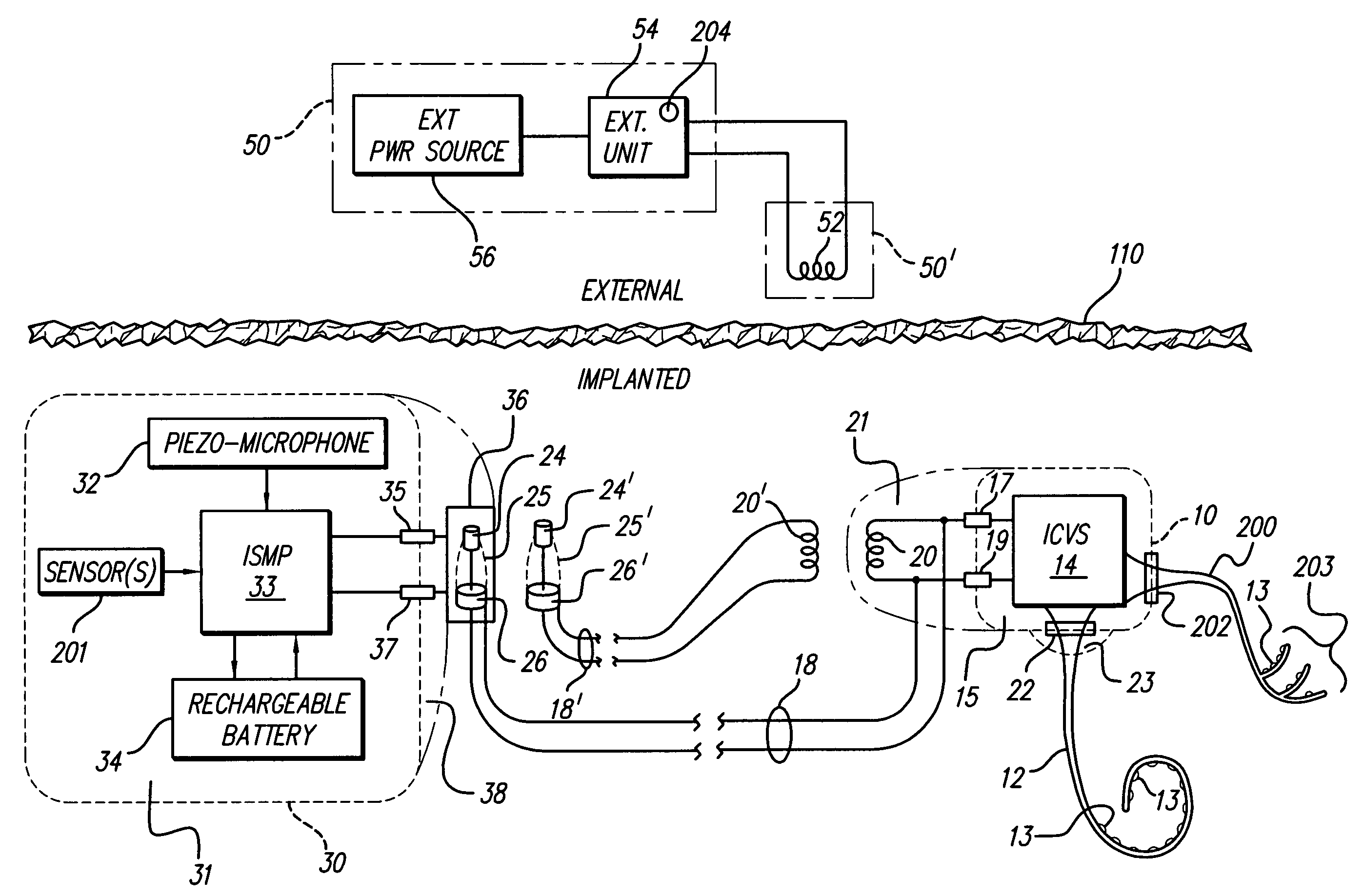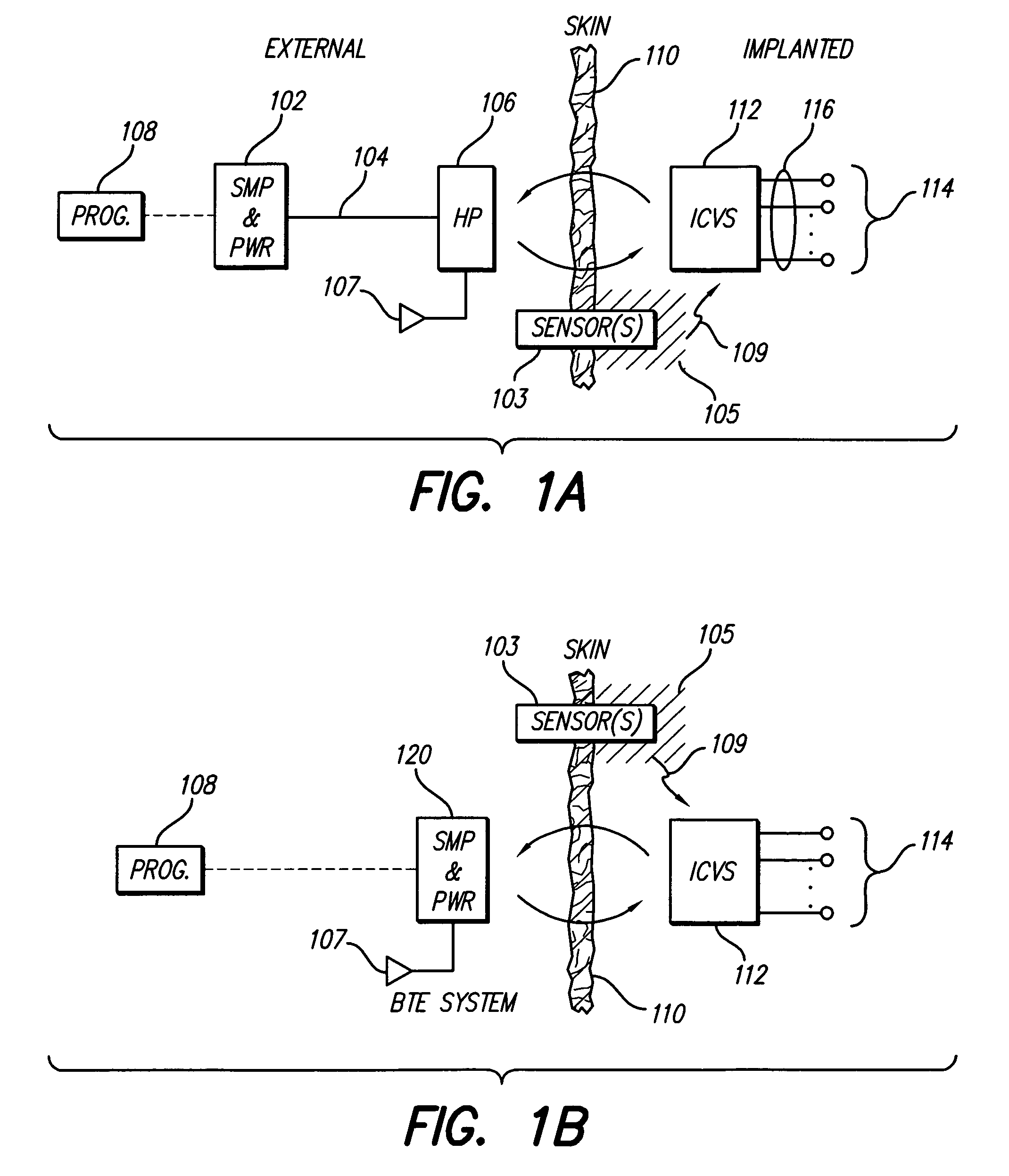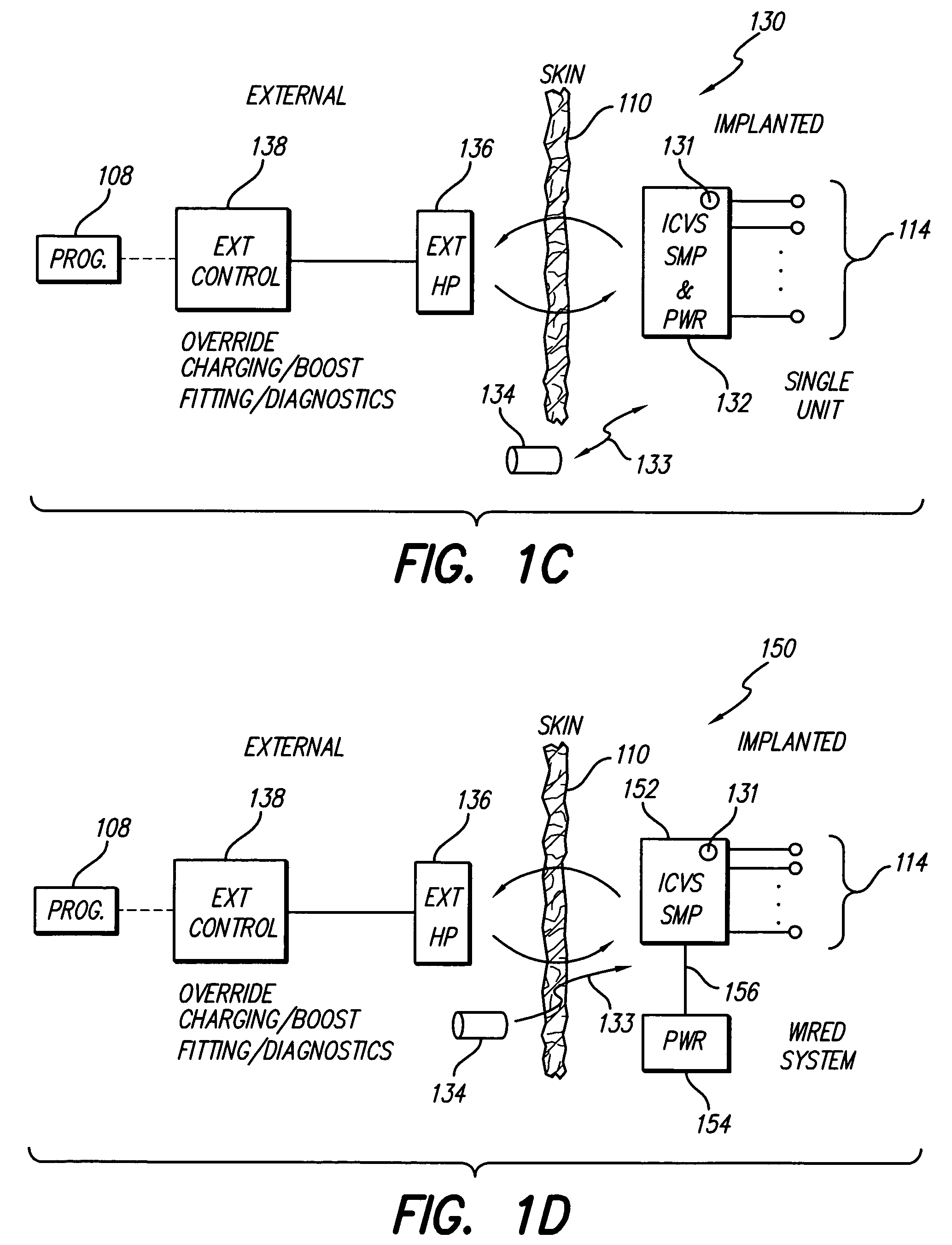Dual cochlear/vestibular stimulator with control signals derived from motion and speech signals
a cochlear/vestibular stimulator and control signal technology, applied in the field of cochlear implant systems and methods, can solve the problems of affecting patients' daily activities, affecting the treatment of patients, and unable to effectively treat patients with combined loss of hearing and vestibular sensation
- Summary
- Abstract
- Description
- Claims
- Application Information
AI Technical Summary
Benefits of technology
Problems solved by technology
Method used
Image
Examples
Embodiment Construction
[0024]The following description is of the best mode presently contemplated for carrying out the invention. This description is not to be taken in a limiting sense, but is made merely for the purpose of describing the general principles of the invention. The scope of the invention should be determined with reference to the claims.
Overview
[0025]One embodiment of the present invention relates to an implantable cochlear / vestibular stimulation system that is partitioned into two components: (1) a hybrid cochlear / vestibular stimulator component and associated electrode array(s) which are designed to last for the life of the patient; and (2) an implantable speech / motion processor and battery component which are designed to be explanted and replaced from time to time. It is to be understood, however, that other embodiments of the invention may be used. For example, the invention may be practiced in a single implantable component, which comprises a fully implantable cochlear / vestibular stimu...
PUM
 Login to View More
Login to View More Abstract
Description
Claims
Application Information
 Login to View More
Login to View More - R&D
- Intellectual Property
- Life Sciences
- Materials
- Tech Scout
- Unparalleled Data Quality
- Higher Quality Content
- 60% Fewer Hallucinations
Browse by: Latest US Patents, China's latest patents, Technical Efficacy Thesaurus, Application Domain, Technology Topic, Popular Technical Reports.
© 2025 PatSnap. All rights reserved.Legal|Privacy policy|Modern Slavery Act Transparency Statement|Sitemap|About US| Contact US: help@patsnap.com



